Summary of Indices & Reports - 4 (2025) | Economic Survey & Government Reports - UPSC PDF Download
Overview of World Bank's Poverty and Equity Brief Report
 Poverty Reduction Progress
Poverty Reduction Progress
Why is it News?
The World Bank's Poverty and Equity Briefs (PEBs) for India, released in April 2025, highlight the country's achievement in lifting 171 million people out of extreme poverty. The report shows a significant decrease in the percentage of people living on less than 2.15 USD. day, from 16.2% in 2011-12 to 2.3% in 2022-23.
What are the Poverty and Equity Briefs (PEBs)?
- The PEBs are reports that display trends in poverty, inequality, and shared prosperity across more than 100 developing countries.
- These briefs are published twice a year, during the Spring and Annual Meetings of the World Bank and the International Monetary Fund (IMF).
Key Indicators & Measurement:
- The latest data on essential development indicators, such as poverty rates and the total number of impoverished people, are measured using both national poverty lines and international standards:
- The international extreme poverty line ( USD 2.15 per day)
- The lower-middle-income line ( USD 3.65 per day)
- The upper-middle-income line ( USD 6.85 per day)
Methodology for India:
- The World Bank’s poverty estimates for India are based on the 2011–12 Consumption Expenditure Survey (CES) and the 2022–23 Household Consumption Expenditure Survey.
Findings of the Poverty and Equity Briefs Reports by the World Bank
Rural & Urban Poverty Reduction
- Rural Areas: Extreme poverty decreased from 18.4% in 2011-12 to 2.8% in 2022-23.
- Urban Centres: Extreme poverty fell from 10.7% to 1.1% during the same period.
- Rural-Urban Gap: The difference in poverty rates between rural and urban areas reduced significantly, from 7.7 percentage points to 1.7 percentage points, with an annual decline rate of 16% between 2011-12 and 2022-23.
Lower-Middle-Income Level
- National Poverty Rate: At the 3.65 USD per day line, poverty rate dropped from 61.8% in 2011-12 to 28.1% in 2022-23, lifting 171 million people out of poverty.
- Rural Poverty: Fell from 69% to 32.5%.
- Urban Poverty: Decreased from 43.5% to 17.2%.
State-Wise Contribution
- Initial Poverty Levels: The five most populous states (Uttar Pradesh, Maharashtra, Bihar, West Bengal, and Madhya Pradesh) accounted for 65% of the extreme poor in 2011-12.
- Poverty Reduction: These states contributed two-thirds of the poverty reduction by 2022-23.
- Ongoing Poverty: By 2022-23, they still represented 54% of the extreme poor and 51% of the multidimensionally poor from 2019–21.
Decline in Multidimensional Poverty
- Multidimensional Poverty Index (MPI): Non-monetary poverty, which includes education and basic services, fell from 53.8% in 2005–06 to 16.4% in 2019–21, and further to 15.5% in 2022-23.
- Gini Index Improvement: The consumption-based Gini index improved from 28.8 in 2011-12 to 25.5 in 2022-23, indicating reduced income inequality.
Employment and Labour Trends
- Urban Unemployment: Decreased to 6.6% in the first quarter of FY 2024-25, the lowest since 2017-18.
- Rural Women Employment: Increased in agricultural sectors.
- Self-Employment: Growing among rural workers and women.
- Gender Disparities: Despite a female employment rate of 31%, there are significant gender disparities, with 234 million more men in paid work.
- Youth Unemployment: Stands at 13.3%, rising to 29% among graduates.
- Job Formality: Only 23% of non-farm paid jobs are formal, and most agricultural jobs remain informal.
Note: The Gini index measures income or consumption distribution inequality within an economy, with 0 representing perfect equality and 100 indicating perfect inequality.
Factors Contributing to Poverty in India
- Rising Inequality: The uneven distribution of resources leads to relative poverty, where some individuals remain disadvantaged despite overall economic growth. The World Inequality Report (2022-23) highlights that the richest 1% own 45% of global wealth, while 3.6 billion people live on less than USD 6.85 per day (Purchasing Power Parity (PPP)).
- Social and Economic Exclusion: Marginalised communities, women, and individuals with disabilities face discrimination and barriers to accessing opportunities, exacerbating poverty.
- Gender Inequality: Women and girls experience discrimination and limited opportunities, making it challenging for them to escape poverty. In India, men earn 82% of labour income, while women earn 18%, according to the World Inequality Report 2022.
- Youth Unemployment:. high number of unemployed youth, particularly in rural areas, contributes to poverty and social unrest.
Unemployment Rate and Infrastructure Challenges
 Youth Unemployment Challenges
Youth Unemployment Challenges
The most recent Annual Periodic Labour Force Survey (PLFS) indicates that the Unemployment Rate (UR) for individuals aged 15-29 in 2023-24 stands at 10.2%, which is an improvement compared to the global average.
However, inadequate infrastructure, including subpar health facilities, limited educational resources, contaminated water, insufficient sanitation, and poor transportation, perpetuates a cycle of poverty. This lack of essential services hampers economic opportunities and diminishes overall quality of life.
Measures to Alleviate Poverty in India
- Enhancing Gender Equality and Empowerment: Reinforcing the Equal Remuneration Act of 1976 is crucial for ensuring equal pay for equal work, thereby narrowing the gender wage gap.
- Implementing vocational training and skill development initiatives for women, such as the Skill India Mission, can further empower women economically, particularly in rural regions.
- Fostering Inclusive Growth for Marginalised Groups: Strengthening targeted programmes like the Pradhan Mantri Adi Adarsh Gram Yojana is essential for addressing socio-economic disparities faced by scheduled tribes.
- Expanding access to higher education through scholarships and skill-building initiatives for marginalised groups can promote greater inclusivity and uplift these communities.
- Expanding Skill Development Initiatives: Programs such as the Pradhan Mantri Kaushal Vikas Yojana (PMKVY) should be broadened to enhance the employability of youth, especially in rural areas.
- Encouraging rural entrepreneurship through schemes like Stand Up India can stimulate local job creation and economic activity.
- Infrastructure Development in Underserved Regions: Investing in initiatives like the National River Conservation Plan and improving access to clean drinking water through the Atal Mission for Rejuvenation and Urban Transformation (AMRUT) can help ensure that basic infrastructure reaches all parts of the country.
- Promoting public-private partnerships to enhance transportation and digital infrastructure will also facilitate greater access to economic opportunities and resources.
Conclusion
India has achieved notable advancements in reducing both monetary and multidimensional poverty. However, challenges related to inequality, youth employment, and data comparability persist and require ongoing policy attention. To sustain inclusive growth, it is vital to conduct regular surveys, utilize a broader range of poverty indicators, and implement gender-sensitive interventions.
The Global Risks Report 2025
 Global Risks 2025
Global Risks 2025
Why in News? The World Economic Forum has released the 20th edition of the Global Risks Report 2025, which provides a comprehensive analysis of the most pressing global risks and their evolving nature. The report highlights critical issues such as climate change, technological advancements, geopolitical tensions, and societal polarization, emphasizing the urgent need for multilateral solutions to address these challenges effectively.
What is the Global Risks Report, 2025?
About: The Global Risks Report was initiated in 2006 when concerns like terrorism and avian influenza were prominent. Over the years, significant incidents such as the 2007-2008 financial crisis, COVID-19, and ongoing structural changes— including technological acceleration, geostrategic shifts, climate change, and demographic changes—have shaped the global risk landscape.
Key Trends in Risk Perceptions:
- Environmental Risks Dominate Long-Term Concerns: Long-term risk rankings consistently place environmental risks, especially extreme weather events, at the forefront.
- Pollution has become a major concern since 2009, alongside biodiversity loss and ecosystem collapse, which has surged from rank 37 in 2009 to rank 2 in 2025.
- Perennial Concerns About Conflict. State-based armed conflict remains a significant worry, with rankings rising during crises such as the Syrian civil war and the Russian invasion of Ukraine.
- Societal Risks as Long-Term Challenges: Issues like inequality, societal polarization, and the erosion of human rights consistently rank high. Societal polarization, in particular, has risen from rank 21 in 2012 to rank 8 in 2025, reflecting increasing divisions.
- Economic Risks Perceived as Less Significant Long-Term: Economic risks such as inflation and downturns rank lower, with only concerns about debt and asset bubbles remaining significant.
- Technological Risks. Risks related to technology, including negative outcomes from artificial intelligence and cyber warfare, are highly unpredictable. Concerns like misinformation have replaced earlier worries about nanotechnology and pervasive computing.
Technological Exploitation and Cybersecurity Risks
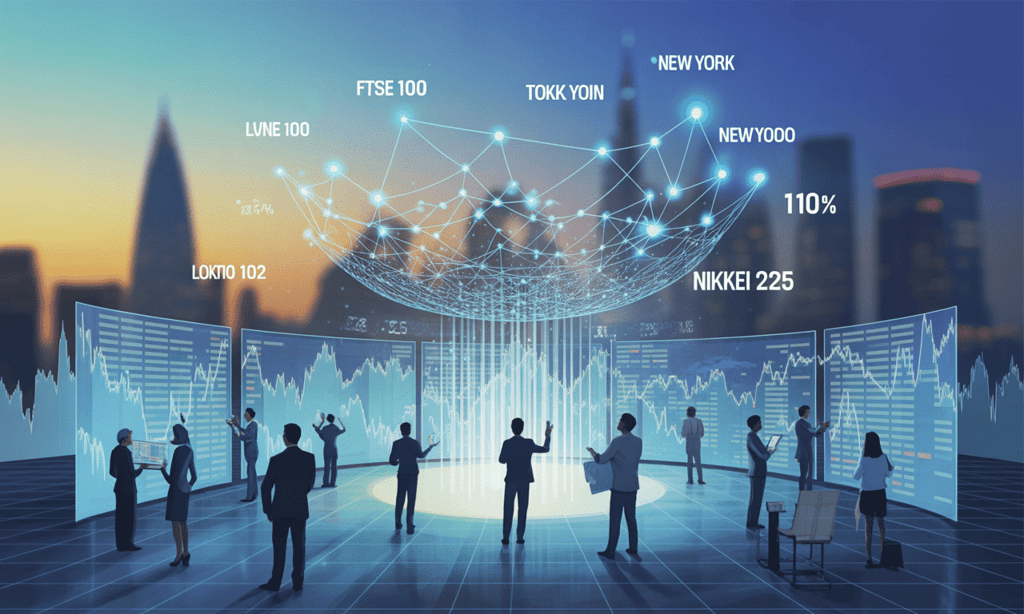 Cybersecurity Threats
Cybersecurity Threats
AI and GenAI enable malicious actors and state agencies to enhance disinformation campaigns, exploit online vulnerabilities, and undermine algorithms through cyberattacks, further eroding trust in digital systems.
What are the Long-Term Risks?
Deteriorating Risk Landscape. By 2035, the global risk landscape is expected to worsen, with 62% of respondents anticipating a turbulent or stormy outlook.
Structural Forces Shaping Risks
- Four major forces are influencing long-term global risks:
- Technological acceleration
- Geostrategic shifts
- Climate change
- Demographic bifurcation
These forces interact, heightening risks and contributing to instability, leading to challenges such as:
- Geopolitical fragmentation
- Rapid technological change
- Climate disruption
- Demographic issues, including aging populations
Emerging Risk Themes
- Key emerging risks encompass:
- Biotech advancements. While offering medical breakthroughs, they raise concerns about misuse, such as biological terrorism or gene editing errors.
- Pollution. Particularly from underappreciated pollutants, posing significant health and ecological threats.
Dominance of Environmental Risks
- Environmental risks dominate the 10-year outlook, with concerns such as:
- Extreme weather events (1st)
- Biodiversity loss (2nd)
- Critical Earth system changes (3rd)
- Natural resource shortages (4th)
- Pollution (10th)
Younger respondents rated pollution as high as 3rd place.
Technological and Societal Risks
- Technological risks. Adverse outcomes of AI (rank 6) are expected to increase significantly.
- Societal risks. Issues such as inequality (rank 7) and societal polarization (rank 8) may lead to social instability and demographic challenges in aging societies, like Japan and Germany.
Geopolitical Risks and Economic Stability
- Geopolitical risks are crucial in the short term but drop out of the top 10 for the long-term outlook.
- State-based armed conflict has risen to rank 12.
- Risks from biological, chemical, or nuclear weapons have increased.
- Economic risks remain unstable, with crime and illicit economic activity climbing to rank 15.
Pollution as a Critical Long-term Risk
In the GRPS 10-year outlook, pollution is ranked 10th. It is closely linked to health risks, biodiversity loss, and economic burdens, particularly in low- and middle-income countries.
- Emerging concerns include:
- Per- and poly-fluoroalkyl substances (PFAS) (known as "forever chemicals")
- Microplastics. Both pose serious health and environmental risks.
Bioweapons and Bioterrorism Threats
Advancements in biotechnology facilitate the potential creation or modification of biological agents by malicious actors, leading to risks such as:
- Pandemics
- Targeted biological attacks
The accessibility of AI-driven tools and reduced costs amplify the risks associated with developing bioweapons, including those targeting specific genetic groups.
Health Risks from Biotech Applications
While biotechnology offers groundbreaking solutions like gene editing and brain-computer interfaces, potential risks include:
- Unforeseen long-term health consequences
- Clinical complications
- Accidental or malicious misuse
Technologies such as CRISPR-Cas9, despite their transformative potential, may lead to off-target effects, genetic rearrangements, or unknown generational repercussions.
Technological Convergence and Misuse
The convergence of biotechnology with artificial intelligence accelerates both advancements and associated risks. Instances include:
- AI models inadvertently producing toxic substances
- Potential exploitation of DNA for hacking computer systems
The fusion of biological and cyber domains introduces intricate, compounding risks.
Pension Crisis
Superaging societies, characterized by over 20% of the population aged 65 and above, face escalating dependency ratios, putting pressure on state and private pension systems.
- Transitioning from defined benefit plans to contribution schemes shifts the burden of responsibility to individuals.
- A significant portion of the population lacks the financial literacy or income necessary for adequate savings.
- Pension disparities are more pronounced among women and low-income workers, increasing the risk of poverty for retirees.
Labour and Long-term Care Shortages
Superaging societies will face substantial labor shortages, particularly in long-term care sectors that are:
- Underfunded
- Relying on unpaid caregivers or migrant workers
Although immigration could alleviate some of these shortages, restrictive immigration policies and inadequate support for women in the workforce complicate solutions. Technological advancements such as robotics and telehealth may provide some assistance, but they cannot fully address the growing demand for care.
Future Superaging Risks
Countries with young populations today, especially in Sub-Saharan Africa, may eventually face similar superaging challenges if they do not invest adequately in human capital or establish robust social safety nets.
- These regions could experience compounded difficulties related to:
- Poverty
- Inequality
- Underdeveloped care systems when they transition into superaged societies.
Recommendations in the Report
 Policy Recommendations
Policy Recommendations
Foster Multilateralism
- Global treaties and agreements are essential for addressing geoeconomic challenges effectively.
- It is crucial to revitalize reforms at the World Trade Organization (WTO), particularly in areas such as:
- Dispute resolution
- Tariff-setting
- Digital trade
Enhance Domestic Economic Resilience
- Countries should prioritize strengthening their domestic economies in response to increasing trade challenges and costs.
- Key areas for investment include the development of the financial sector, education, health, and infrastructure.
- Achieving self-sufficiency in strategic sectors such as:
- Energy
- Agriculture
- Defence
Urgent Need for Action
- Comprehensive policies and adaptive strategies are necessary to address pollution and its impacts on health, ecosystems, and economies.
- Stricter regulations and the integration of emerging pollutants are vital.
- Promoting sustainable practices across various industries and regions is crucial.
Improve Monitoring, Reporting, and Evaluation (MRE) Systems
- Enhancing MRE systems can lead to:
- Actionable insights
- Informed policies
- Targeted interventions
- This improvement makes pollution management more effective and transparent.
Unlock Ambitious Funding
- Pollution initiatives are significantly underfunded, with less than 1% of international development funding allocated to air pollution mitigation between 2015 and 2021.
Call for Ethical and Regulatory Oversight
- Clear ethical boundaries and robust global regulations are necessary to prevent the misuse of biotechnology.
- Strong governance frameworks should balance innovation with risk and ensure equitable access to advancements.
Global Ethical Oversight Body
- Establishing a global ethical oversight body comprising biotech and ethics experts can help ensure compliance with standards.
- Progress in frameworks, such as the World Health Organization (WHO) governance recommendations for human genome editing, offers a foundation for global collaboration.
Policy and Structural Reforms
- Raising retirement ages and improving pensions require careful policy balancing to avoid intergenerational tensions.
Encourage Flexible Work Policies
- Organizations should implement flexible work arrangements to support:
- Non-linear career paths
- Re-entering the workforce after caregiving, education, or reskilling
- This approach fosters a more adaptable and inclusive workforce.
Promote Healthier Pre-Retirement Lifestyles
- Governments and the private sector should initiate programs to enhance health choices before retirement, focusing on:
- Exercise
- Nutrition
- Social interactions
- Initiatives like Singapore’s “health district” demonstrate how promoting healthy habits can:
- Reduce long-term care needs
- Strengthen economies
- Alleviate fiscal pressures
EAC-PM Report on Domestic Migration
 Domestic Migration Trends
Domestic Migration Trends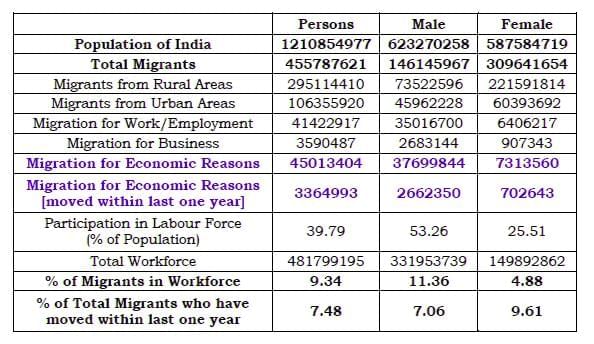
Why in News?
The Economic Advisory Council to the Prime Minister (EAC-PM) has released a report titled “400 Million Dreams!”, which aims to enhance our understanding of internal migration in India using detailed data.
About the Report
Title and Focus: The report, “400 Million Dreams!” investigates domestic migration trends in India using new datasets to provide insights beyond traditional sources like the Census.
Agencies and Contributors: Authored by Bibek Debroy, Chairman of the EAC-PM, and Devi Prasad Misra, an officer of the Indian Revenue Service, the report reflects collaborative efforts to understand the socio-economic aspects of migration.
Period of Consideration: The study examines data from the post-2011 Census period, considering trends up to 2024, and utilizes high-frequency datasets to track migration patterns over decades.
Data Sources: The report employs three high-frequency datasets to enhance migration insights:
- Indian Railways UTS Data: Captures migration flows through unreserved ticket sales, highlighting affordable travel options for blue-collar workers.
- TRAI Roaming Data: Tracks seasonal and temporary migration, offering insights into changes in the urban workforce.
- District-Level Banking Statistics: Provides perspectives on remittance inflows and the financial impact on origin regions.
What are the Major Findings of the Report?
Decline in Migration Rates: Domestic migration rates in India have decreased by 11.78% since the 2011 Census, resulting in a migrant population of approximately 400 million, constituting 28.88% of the total population. This decline is attributed to improved living conditions and increased job opportunities in rural areas.
Additional Highlights from the Study
- As of 2023, the number of migrants in India is around 40.2 million, which is 11.78% lower than the Census 2011 figure of 45.57 million.
- The migration rate has decreased from 37.64% in 2011 to 28.88% in 2023.
- This decline is believed to result from improved access to education, healthcare, infrastructure, and job opportunities in regions that traditionally experienced high levels of migration.
Spatial Dimensions
- Over 75% of expected migration flows occur within a 500 km radius from the origin, supporting the concept of “gravitational effects” in migration.
- Major origin districts are located near urban centers such as Delhi, Mumbai, Chennai, Bengaluru, and Kolkata.
- The gravitational effect indicates a preference for moving to nearby areas due to factors like distance and social connections.
Changing Dynamics in Recipient States
- The top five states receiving migrants have shifted, with West Bengal and Rajasthan rising in rank, while Andhra Pradesh and Bihar have fallen.
- Even in these leading states, the percentage of migrants has decreased, suggesting a broader dispersion of migration.
Growth and Decline Trends
- States such as West Bengal, Rajasthan, and Karnataka have experienced a significant increase in their share of incoming migrants.
- Conversely, Maharashtra and Andhra Pradesh have seen a decline in their share of total migrants.
Key Migration Routes
- State-level migration routes include Uttar Pradesh to Delhi, Gujarat to Maharashtra, Telangana to Andhra Pradesh, and Bihar to Delhi.
- Popular district-level routes comprise Murshidabad to Kolkata, Paschim Bardhaman to Howrah, Valsad to Mumbai, Chittoor to Bengaluru Urban, and Surat to Mumbai.
Seasonal Migration Insights
- Migration peaks are observed in April-June (sowing/harvesting seasons) and November-December (festival and wedding season).
- Post-pandemic, even peak months like April-May exhibit 6.67% fewer passengers compared to pre-pandemic levels in 2012.
Migration Distance
- Over 75% of migration flows occur within 500 km of the origin, aligning with Ravenstein’s Theory of Human Migration, which emphasizes the significance of proximity.
Economic Drivers of Migration
- Job opportunities are a primary driver of migration, with 45 million individuals relocating for economic reasons, crucial for blue-collar employment in urban areas.
- Seasonal spikes in migration correspond with agricultural cycles and festivals, as evidenced by peaks in railway ticket sales and roaming SIM data.
Gender-Specific Trends
- Male migrants predominantly move for work, while marriage is the primary reason for female migration, particularly in rural regions.
- There is a noteworthy trend of increasing female participation in urban workforce migration, although social constraints continue to limit this phenomenon.
Economic Impact at Origin and Destination
 Migration Dynamics
Migration Dynamics
Remittances play a crucial role in strengthening rural economies, with districts in Uttar Pradesh and Bihar receiving the highest inflows.
Banking data indicates a significant increase in savings and investments in districts with high out-migration, reflecting improved financial literacy among households with migrants.
Urban areas consistently provide both skilled and unskilled labour, contributing to economic growth. However, this influx also creates substantial pressures on infrastructure.
What are the Major Reasons for Migration Mentioned in the Report?
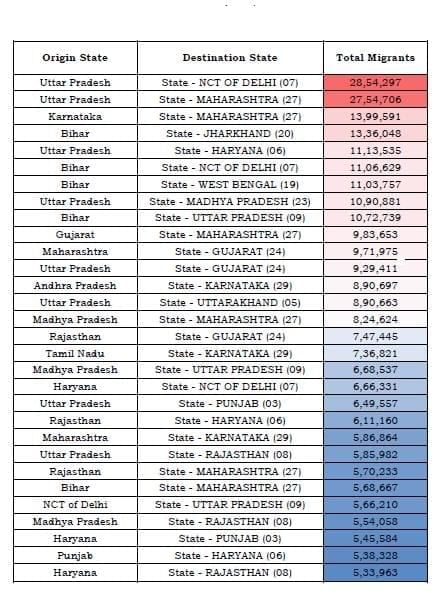
- Employment Opportunities. Over 45 million migrants move in search of better job prospects, with urban centres like Delhi NCR, Mumbai, and Bengaluru being primary destinations. Migrants predominantly fill gaps in labour-intensive sectors such as construction, manufacturing, and domestic services.
- Education. Migration for education remains significant, with cities like Delhi, Pune, and Chennai attracting students from smaller towns. The report highlights that access to higher education institutions often dictates migration trends among youth.
- Marriage. A leading cause of migration among women, accounting for over 50% of female migrations, particularly in rural India. This type of migration often coincides with economic migration, as women join the workforce in their new areas.
- Family Relocation. Movement due to household relocation constitutes a significant portion, especially among lower-income groups seeking improved living standards. The report links this trend to the expansion of affordable housing schemes in urban areas.
- Seasonal Factors. Temporary migrations for activities such as harvesting, sowing, and festivals are notable, particularly in agricultural and industrial regions. High-frequency data from railways highlights these periodic spikes in movement.
What are the Challenges Highlighted in the Report?
- Data Limitations. Traditional datasets like the Census and irregular surveys become outdated by the time of publication, restricting their usefulness for real-time policy interventions. High-frequency datasets, although detailed, often lack demographic information such as age, gender, and reason for migration.
- Urban Infrastructure Strain. Cities experiencing high in-migration, such as Delhi, Mumbai, and Bengaluru, struggle to provide adequate housing, transportation, and healthcare. Rapid urbanization results in the emergence of slums and informal settlements, placing additional strain on municipal resources.
- Regional Disparities. Origin regions like Bihar and Uttar Pradesh face challenges such as labour shortages, decreased agricultural productivity, and "brain drain" due to high out-migration. Development remains uneven, with destination states reaping disproportionate benefits from migration-driven economic contributions.
- Gender Inequalities. Many female migrants, including those relocating for marriage, encounter difficulties in accessing employment opportunities and social security in their new regions. The absence of gender-sensitive policies worsens vulnerabilities for women migrants.
- Social Integration. Migrants often experience discrimination and marginalization in destination cities, hindering social cohesion. Language barriers and cultural differences pose challenges for assimilation into local communities.
- Policy Gaps. The lack of portable social welfare schemes restricts migrants' access to essential services when moving across states. Inadequate attention to secondary cities leads to the overburdening of Tier-1 cities while neglecting smaller urban centres.
Way Forward
- Develop Real-Time Migration Tracking. Create a centralized data platform to integrate railway, telecom, and banking information, allowing policymakers to monitor migration trends in real time. Regular updates and analytics-driven insights are crucial for timely policy interventions.
- Strengthen Urban Infrastructure. Invest in affordable housing, public transport, and healthcare in high in-migration states to accommodate growing urban populations. Expand social security networks to support migrants, particularly those in informal sectors.
- Enhance Opportunities in Origin Areas. Implement rural employment schemes to mitigate distress migration. Promote skill development programmes tailored to regional industries to retain local labour.
- Portable Benefits and Support Systems. Establish portable social welfare schemes ensuring migrants retain access to healthcare, education, and ration benefits across state borders. Set up migrant support centres in urban areas to assist with legal, financial, and social integration.
- Gender-Sensitive Policies. Develop initiatives to support women migrants, focusing on workforce participation and social security. Encourage employability training for women relocating to urban centres.
- Focus on Secondary Cities. Encourage development in Tier-2 and Tier-3 cities by creating incentives for industries to establish operations there.
Development of Special Economic Zones (SEZs) in Smaller Cities
- Objective: To create a more balanced migration flow across the country.
- Rationale: Smaller cities often face challenges in attracting and retaining talent, leading to an uneven distribution of population and resources. By developing SEZs in these areas, the government aims to stimulate local economies and make them more attractive for both businesses and individuals.
- Expected Outcomes: Increased job opportunities in smaller cities, reduced pressure on metropolitan areas, and a more balanced regional development.
Electronics: Powering India’s Participation in Global Value Chains
 Economic Growth Zones
Economic Growth Zones
Introduction
- The NITI Aayog has published a comprehensive report titled "Powering India's Participation in Global Value Chains (GVCs)", focusing on the electronics sector.
- This report comes at a crucial time as India aims to expand its share in the global manufacturing market, which currently stands at only 3.3% of total output.
Understanding Global Value Chains (GVCs)
- Definition: GVCs involve the international division of production, where activities such as design, production, marketing, and distribution are spread across different firms and locations.
- Purpose: GVCs enable companies to enter global markets by focusing on specific production tasks, allowing countries to specialize in parts of the production process.
- Benefits: Participation in GVCs fosters industrialization, economic growth, and exports, leading to job creation, income generation, knowledge transfer, and ecosystem development.
- Example: The iPhone's production illustrates GVCs, with components sourced globally and final assembly in countries like India, China, and Vietnam.
Evolution of Trade Theories and GVCs
- Historical Perspective: The concept of GVCs has evolved, reflecting changes in international trade theory over time.
- David Ricardo's Theory: Emphasizes that specialization based on comparative advantages enhances trade.
- Heckscher-Ohlin Theory: Suggests that trade patterns are influenced by resource endowments such as labor and capital.
- Paul Krugman's New Trade Theory: Highlights that trade benefits arise from specialization, economies of scale, and industrial agglomeration.
Current Global Manufacturing Scenario
- Manufacturing worldwide has surged by 2.5 times over 24 years, reaching USD 16.19 trillion in 2022.
- Leading countries include China (28.4% of global output), the USA (16.6% ), and Japan (7.2% ).
- India, contributing USD 457 billion, holds a mere 3.3% share, trailing behind major manufacturing powers.
Importance of the Electronics Sector
- Economic Impact: The electronics sector plays a crucial role in boosting India's GDP, contributing between 13% to 17.7%.
- Post-Pandemic Shift: Changes in supply chains and geopolitical factors position India as an attractive manufacturing destination.
- Export Growth: Increasing mobile phone exports enhance India's global manufacturing reputation.
- Demographic Advantage:. young and aspirational population drives demand for advanced electronic products.
- Innovation Leadership: The sector is at the forefront of technological advancements, influencing various industries.
- Global Integration: Strengthening ties in global value chains presents further growth opportunities.
Current Trends in Global Value Chains (GVCs) for Electronics
- Market Overview: The global electronics market is valued at USD 4.3 trillion, encompassing a wide range of products from smartphones to electric vehicles.
- Dominant Players: Countries like China, Taiwan, the USA, South Korea, Vietnam, Japan, Mexico, and Malaysia account for over 90% of global electronics production, with China alone responsible for 60% of output.
- Trade Dynamics: Global electronics trade is estimated at USD 3 trillion, with China (30% of exports), Taiwan (9%), and the USA (7%) leading in exports. India’s share remains below 1%, with annual exports around USD 25 billion.
- Market Segments: The finished goods market, currently valued at USD 2.4 trillion, is projected to grow to USD 3.5 trillion by 2030, driven by sectors like mobile phones, automotive electronics, and telecommunications. The components market, valued at USD 1.8 trillion, is led by electronic components and modules.
Future Outlook
- Market Expansion: The global market for electronics finished goods is expected to grow at a 5% CAGR, reaching USD 3.5 trillion by Fiscal Year 2030, fueled by rising consumption, premiumisation, and the introduction of new product categories.
- Supply Chain Diversification: Geopolitical tensions, disruptions from the Covid-19 pandemic, and diminishing labour cost advantages in China are prompting producers to relocate supply chains to countries like Vietnam, Mexico, and Malaysia.
- India’s Strategic Positioning: With supportive demographics, government initiatives, and enhancing domestic capabilities, India is well-positioned to capitalize on this supply chain shift. However, strong competition from countries like Vietnam, Mexico, and Malaysia necessitates prompt action for India to secure a 4-5% share in global electronics exports by 2030.
State of Electronics Manufacturing in India
- Growth Trajectory: India's electronics manufacturing sector has witnessed significant growth, particularly in the last five years, with a Compound Annual Growth Rate (CAGR) of around 17.1%. This growth is driven by various factors including government initiatives, increasing domestic demand, and a shift in global supply chains.
- Production Value: The total production value of electronics in India reached approximately USD 75 billion in the last fiscal year, reflecting the sector's expanding capacity and capabilities.
- Mobile Phone Manufacturing:. major contributor to this growth has been the mobile phone segment, which accounts for a significant portion of electronics production. In recent years, India has emerged as one of the largest manufacturers of mobile phones globally, with production value increasing from USD 3 billion in 2015 to an estimated USD 30 billion in the last fiscal year. This surge is attributed to government policies like the Production-Linked Incentive (PLI) scheme, which incentivizes local production.
- Policy Support: The Indian government's focus on making the country a global manufacturing hub, especially in electronics, has been pivotal. Initiatives like "Make in India" and specific PLI schemes for various electronics segments have bolstered investor confidence and attracted both domestic and foreign companies to set up manufacturing units in India.
- Future Potential: Looking ahead, the electronics manufacturing sector in India is poised for further growth, with projections indicating a potential increase in production value to USD 300 billion by 2025. This growth will be supported by rising domestic demand, further integration into global supply chains, and advancements in technology that enable more efficient and higher-quality production processes.
Rapid Expansion of India's Electronics Sector
 India's Electronics Growth
India's Electronics Growth
- India's electronics industry has been growing rapidly, with a Compound Annual Growth Rate (CAGR) of 13%.
- Production has nearly doubled, increasing from USD 48 billion in FY17 to USD 101 billion in FY23, driven mainly by mobile phone manufacturing, which now makes up 43% of total production.
Milestone in Mobile Manufacturing
- India has made significant progress in smartphone manufacturing, reducing imports from 80% to producing 99% of smartphones domestically.
Government Initiatives Boosting Manufacturing
- Government policies like Make in India, the Production Linked Incentive Scheme (PLI), and the India Semiconductor Mission have significantly boosted domestic manufacturing capabilities.
- These initiatives have also attracted foreign investments, particularly in sectors like mobile and automotive electronics.
Mixed Results in PLI Schemes
- The PLI scheme for large-scale electronics has been successful in attracting substantial investments.
- However, the PLI schemes for IT hardware and telecom sectors have not yet seen similar levels of success.
Growing Domestic Demand and Export Potential
- Domestic demand for electronics is on the rise, growing at a 15% CAGR and reaching USD 155 billion in FY23.
- Despite this growth, India accounts for only 4% of the global electronics market and contributes less than 1% to global value chains.
Overview of India’s Manufacturing Landscape
- India's manufacturing landscape is diverse, with electronics emerging as a prominent sector.
- The value of domestic electronics production has reached USD 155 billion, doubling from 2017 to 2022.
- This growth is attributed to increasing demand, technological advancements, and favorable government policies.
- Electronics exports have improved significantly, rising from 9th to 6th among India's top export sectors, contributing USD 235 billion in FY23.
- This shift underscores India's growing global competitiveness, enhancing foreign exchange earnings and solidifying its position in the international electronics market.
Presence in the Electronics Value Chain
Overview of Electronics Value Chain
- Design Players/ODMs focus on product design and prototyping.
- Component Makers involve Build-to-Print (OEM specs) and Build-to-Specification (collaboration with ODMs).
- Assemblers/EMS handle assembly, testing, and packaging.
- Brand Owners/OEMs emphasize product innovation, marketing, and IP ownership.
India's Strengths and Limitations
- India excels in assembly and OEM sectors, with companies like Foxconn, Dixon, and Samsung leading the way.
- However, the country faces challenges in component manufacturing, relying heavily on imports for high-tech parts.
- Design capabilities are also limited across various sectors, hindering overall competitiveness.
Segment-wise Insights
- Mobile Phones. Strong in assembly and sub-assembly (batteries, chargers), but reliant on imports for camera modules and displays, with minimal design presence.
- Consumer Electronics. Products like TVs, ACs, and refrigerators show moderate local assembly but depend heavily on imported components like open cells.
- IT Hardware. Over 80% of laptops and servers are imported, with weak assembly and design capabilities.
- Telecom Products. 40% of equipment is imported from China, with minimal local manufacturing and growing design initiatives.
- Automotive Electronics. 65% import dependency for sub-assemblies; local production is mainly for low-tech components like wire harnesses.
- Wearables & Hearables. Focus on assembly with very little design and component manufacturing.
Policy Initiatives in the Electronics Sector
- To achieve a target of USD 500 billion in electronics production and USD 200-225 billion in exports, India needs to focus on generating USD 350 billion from finished goods and USD 150 billion from components.
- This ambitious goal requires robust support through various means, including incentives, trade policies, tax reforms, infrastructure development, and a strong ecosystem for research and development (R&D) and technology.
- The policy initiatives can be broadly categorized into two major areas:
- Fiscal interventions aimed at enhancing components manufacturing, R&D, and industrial infrastructure.
- Non-fiscal interventions designed to promote overall electronics manufacturing.
Challenges in Building India’s Electronics Manufacturing Ecosystem
- Relatively high import tariffs. India faces a complex tariff structure with an average Most Favoured Nation (MFN) tariff of 7.5%. This is higher compared to countries like China (4%), Malaysia (3.5%), and Mexico (2.7%). Such high tariffs increase costs and impact global competitiveness, particularly for sub-assemblies and components.
- Lack of Robust Electronics Component Ecosystem. The growth of electronics component production in India has been slower, at 7% CAGR, reaching USD 15 billion in FY23. Most production is in low-complexity components, while high-complexity manufacturing is underdeveloped due to high capital costs and limited incentives.
- High cost of capital. Electronics manufacturing in India contends with high financing costs ranging from 9-13%. In contrast, countries like China and Vietnam have lower financing costs of 2-7%. Current support schemes in India are also insufficient to meet industry needs, further exacerbating the challenge.
Challenges in Technology Transfer
 Electronics Manufacturing Challenges
Electronics Manufacturing Challenges
Technology Transfer is a vital aspect for the growth of advanced electronics manufacturing in India. However, Indian manufacturers are currently facing significant challenges in this area.
One of the major issues is the technology and skill gap that exists in advanced electronics manufacturing. This gap hinders the ability of manufacturers to keep up with the latest advancements and innovations in the field.
Restrictive investment policies and delays in visa approvals further exacerbate these challenges. These policies limit access to expertise and innovations that are crucial for technology transfer. Joint ventures and technology transfer agreements are being delayed, making it difficult for Indian manufacturers to acquire the necessary technology and skills.
Insufficient Talent and Training
The electronics manufacturing sector in India is grappling with significant skill gaps across all levels of the workforce. This problem arises from several factors:
- Outdated training programs: The training programs currently in place are not aligned with the latest industry requirements and technological advancements.
- Lack of practical exposure: There is insufficient practical exposure for individuals undergoing training, which hampers their ability to apply theoretical knowledge in real-world scenarios.
- Insufficient specialized institutes: There is a shortage of specialized institutes that focus on training individuals in the specific skills required for electronics manufacturing.
These challenges result in higher training costs, low workforce readiness, and limited innovation capacity within the sector. Consequently, the growth of the industry and its competitiveness on a global scale are adversely affected.
Strategic Directions for Future Growth
Production Scenarios @ 2030
The NITI Aayog report presents three potential scenarios for the future of electronics manufacturing in India, with Scenario 2 being the recommended vision for 2030.
Vision @ 2030
Scenario 2 aims to effectively scale specific segments and components by:
- Allocating resources efficiently
- Optimizing growth
- Achieving targeted outcomes
India has set an ambitious goal of USD 500 billion in electronics production by 2030, comprising:
- USD 350 billion from finished goods
- USD 150 billion from components
The objectives include:
- Increasing domestic value addition to over 35%
- Capturing 4-5% of global electronics exports
- Creating 5.5-6 million jobs to stimulate economic growth and stability
Strategies to Achieve USD 350 Billion in Finished Goods
To attain the USD 500 billion target, India aims for USD 350 billion from finished goods by:
- Focusing on established segments
- Diversifying into new products
- Advancing up the value chain with sub-assemblies like camera modules and displays
Established Segments
- Scale up assembly operations in high-demand areas such as mobile devices and consumer electronics for both domestic and global markets.
Emerging Products
- Expand into dynamic categories like laptops, telecom hardware, wearables, and IoT devices to broaden the electronics portfolio.
Priority Segments
- Focus on mobiles, IT hardware, and consumer electronics as mass-market drivers with significant growth potential, leveraging existing infrastructure and favourable policies.
Auto Electronics Growth
- Capitalize on the rapid growth in auto electronics driven by the adoption of Electric Vehicles and global demand for sustainable transportation.
5G and Advanced Electronics
- Leverage indigenous 5G capabilities to scale production and exports, tapping into global demand for telecom and strategic electronics.
Strategies to Achieve USD 150 Billion in Component Production
To enhance global competitiveness and increase domestic value addition, India must shift from assembly to strengthening component manufacturing. This includes:
- Targeting electronic component production to grow from USD 15 billion to USD 150 billion by FY30, contributing to exports, job creation, and domestic value addition.
Category A (High Capex, IP-Owned Components)
- Focus on semiconductors like microprocessors and power electronics, supported by the USD 10 billion India Semiconductor Mission, aiming to contribute USD 20 billion by 2030.
Category B (Tech-Transfer Components)
- Components like SMT-grade passives, battery cells, and sensors need technology access with moderate capex, targeting USD 55-60 billion in production by 2030.
Category C (Low Complexity, Scalable Components)
- Scalable items like connectors and wire harnesses are expected to contribute USD 70-75 billion, backed by domestic players scaling up.
Design Ecosystem Development
Developing a robust design ecosystem is crucial for the success of electronics manufacturing in India. By fostering localized designs, India can source innovative components and further integrate into global value chains.
Future Pandemic Preparedness and Emergency Response
 Pandemic Preparedness
Pandemic Preparedness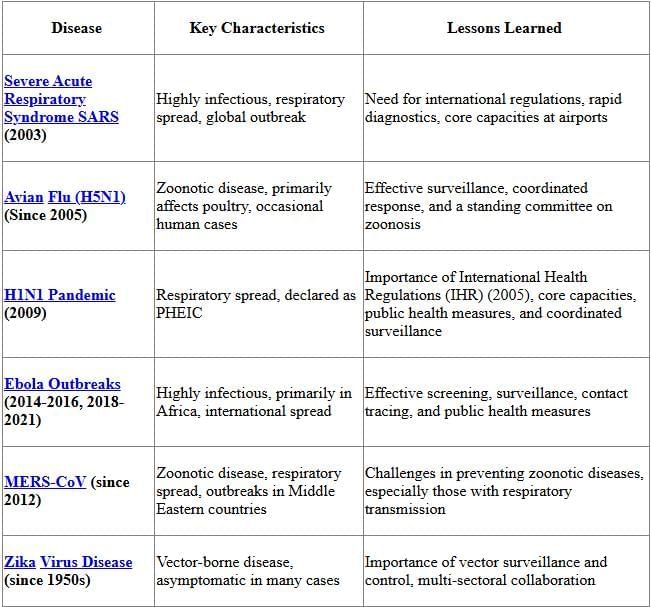
Context
Recently, the Expert Group set up by NITI Aayog on Future Pandemic Preparedness submitted its final report titled "Future Pandemic Preparedness and Emergency Response — A Framework for Action."
The report discusses lessons learned from the Covid-19 pandemic, global best practices, and suggestions for improving India's public health crisis management.
What was the need for setting up the Expert Panel on Pandemic Preparedness?
Lessons From India's Response to Covid-19
- As India emerges from the challenges of Covid-19, which was a severe health crisis, it is important to learn from this experience and build robust frameworks for future pandemic preparedness.
- Global Health Landscape and Future Risks: Worldwide, successful measures such as epidemiologic surveillance, genomic tools, diagnostics, and vaccines played a crucial role in combating the virus.
- India adopted a comprehensive government approach and overcame various challenges, providing valuable insights for future readiness within a 100-day mission framework.
- Future pandemics are inevitable due to factors like ecological changes, zoonotic threats, and shifting human-animal interactions.
- The World Health Organization (WHO) warns that a significant 75% of upcoming health threats may be zoonotic in nature.
- In the past two decades, WHO has declared several Public Health Emergencies of International Concern (PHEICs), including H1N1, Ebola, Zika, and Covid-19, highlighting the unpredictability of health crises.
India’s Preparedness Strategy and One Health Mission
- India’s One Health (OH) Mission integrates human, animal, and environmental health through effective surveillance, outbreak response, and research.
- However, emerging threats such as bioterrorism, antibiotic-resistant pathogens, and climate change necessitate broader strategies that encompass national security and global collaboration.
Global Initiatives and Future Preparedness Frameworks
- Internationally, initiatives like WHO's identification of high-risk pathogens, the updated International Health Regulations, and ongoing negotiations for a Pandemic Accord emphasize the significance of preparedness.
- Countries are encouraged to align with frameworks such as Preparedness and Resilience for Emerging Threats (PRET) to enhance epidemiological capacity and meet obligations under international health regulations.
Delays were also experienced due to the absence of harmonised international guidelines, even for products that had received approval from other countries.
There is a need for a robust and globally recognised network of clinical trial sites to facilitate trials for products developed internationally.
Future Pandemic Threats and Preparedness Strategies
 Pandemic Preparedness
Pandemic Preparedness
- Rising Risk of Emerging Infectious Diseases:The threat of diseases caused by both known and unknown pathogens, particularly zoonotic diseases (those transmitted from animals, birds, or wildlife), has escalated. Contributing factors include:
- Increased international travel, trade, and livestock management.
- Higher human population density.
- Altered interactions between humans and wildlife.
- Ecological shifts like climate change and global warming, which heighten disease risks.
- WHO Global Priority Pathogen List: The World Health Organization (WHO) is in the process of updating a global list of priority pathogens to steer research and development (R&D) investments towards vaccines, diagnostics, and treatments. The current list features diseases such as Covid-19, Ebola, Crimean-Congo haemorrhagic fever, MERS, SARS, Nipah, and others, including Disease ‘X’. Additionally, there is a separate list for antibiotic-resistant bacterial pathogens, categorising 15 families by their R&D and public health priority.
Collaborative Surveillance
- Timely Detection: It is essential to promptly identify emerging pathogens and evaluate their potential impact on public health. Surveillance should monitor the spread, severity, and outcomes of diseases across different communities and healthcare facilities to enhance planning and response strategies.
Preparedness Strategy
- Cross-sectoral and Cross-border Collaboration: Strengthening coordination among public health authorities, disaster management agencies, and various sectors is vital for effectively addressing pandemic threats.
- Risk Assessment and Community Engagement: Developing strategies to assess potential risks, counter misinformation during outbreaks, and ensure accurate information dissemination and community cooperation is crucial.
- Resource Availability: Ensuring that adequate funds and resources are accessible to support robust pandemic response efforts.
- One Health Approach: Creating a multi-hazard plan and strategies for coordinated surveillance and response to zoonotic and emerging infectious diseases is essential.
Recommendations of the Report
Governance
- Empowered Groups for Rapid Response: The report suggests establishing a Standing Empowered Group of Secretaries (EGoS) for Pandemic Preparedness and Emergency Response (PPER). This group, led by the Cabinet Secretary and health officials, would coordinate and monitor pandemic preparedness during peacetime.
- Institutionalising Governance Structures: Existing governance frameworks should be formalised with operational manuals, standard operating procedures (SOPs), and regular drills, such as war-room operations, to enhance preparedness.
Legislation
- Need for Specialized Public Health Legislation: The current legal framework, including the Epidemic Diseases Act (1897) and the National Disaster Management Act (2005), may not adequately address modern health emergencies.
- Proposed Public Health Emergency Management Act (PHEMA):. new act is suggested to cover a broader range of issues beyond epidemics, such as non-communicable diseases, disasters, and bioterrorism.
- Global Examples: Countries like the USA have comprehensive laws, such as the Public Health Service Act, which provide a legal basis for managing public health emergencies. India could benefit from adopting similar frameworks.
Finance and Management
- Pandemic Response Fund: The establishment of a dedicated Pandemic Preparedness and Emergency Response Fund is recommended to ensure readiness for future public health crises. This fund should be set up in advance to facilitate rapid action and a 100-day response timeframe.
Data Management (Generation/Sharing/Analysis)
- Unified Data Platform: Developing a unified platform to integrate various data portals will enable smooth data flow and analysis, supporting prompt decision-making during health emergencies.
- Unified System: Implementing a Unified Data Management System backed by a National Analytical Cell will help in effectively interpreting and utilising data for public health purposes.
Data Communication
- Timely Communication: Establishing a Data Analysis and Reporting Unit at the National Centre for Disease Control (NCDC) will ensure accurate and timely data sharing and public communication regarding health situations.
- Delegated Powers: Creating a manual of pre-approved delegated powers will streamline data communication processes, facilitating efficient information dissemination.
Surveillance
- Strengthening Surveillance Network: The current surveillance system should be enhanced to ensure effective coordination among central, state, and district levels, enabling real-time alerts and responses to emerging health threats.
- Integrated Systems: Developing a One Health approach will connect surveillance systems across public and private sectors, incorporating biosecurity measures at borders and ports.
- Genomic Surveillance: Improving genome sequencing and wildlife surveillance capabilities will aid in monitoring pathogen mutations and tracking trans-boundary movement of pathogens, contributing to early detection and response efforts.
Emergency Operations Center (EOC)
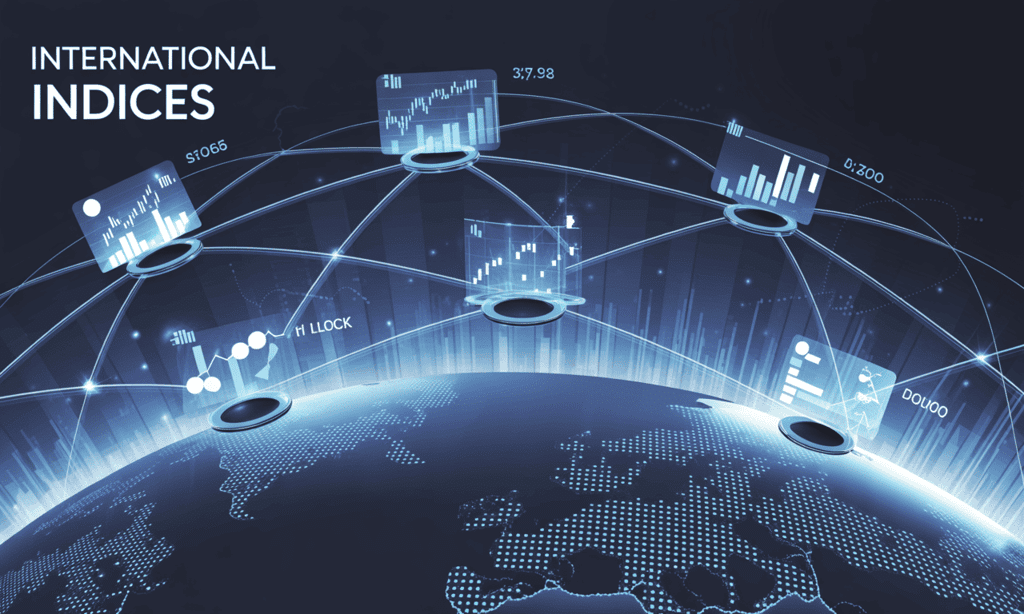 Pandemic Preparedness
Pandemic Preparedness
- Set up a network of EOCs at the district level to ensure quick and effective decision-making during emergencies by integrating data flow.
Bats and Animal Surveillance
- Focus on monitoring bat species as potential reservoirs for zoonotic diseases, using the One Health approach that considers the interconnectedness of human, animal, and environmental health.
Forecasting & Modelling
Build Predictive Models
- Create a strong network for epidemiology forecasting and modelling to predict disease outbreaks and transmission patterns.
- Utilize reliable data from India to develop predictive models focusing on transmission dynamics of diseases.
- Incorporate artificial intelligence and emerging technologies in predictive modelling efforts to enhance accuracy and efficiency.
Epidemiology Forecasting Network
- Establish centres of excellence dedicated to epidemiological forecasting and mathematical modelling to predict disease trends and outbreaks.
- Foster partnerships across public, private, and academic sectors to enhance the effectiveness of forecasting efforts.
- Utilize various surveillance data, including clinical, genomic, and sewage data, for modelling trends and predicting outbreaks, with active involvement from institutions like the Indian Council of Medical Research (ICMR) and Indian Institutes of Technology (IITs).
National Biosafety & Biosecurity Network
Integrated Approach- Create a National Biosafety and Biosecurity Network to address pathogens impacting humans, animals, and plants, following a One Health approach that integrates health considerations across species.
Research and Development
- Set up biosafety containment facilities at various levels (BSL-2, BSL-3, BSL-4) and a network of diagnostic laboratories to ensure quick response to emerging health threats.
Research & Innovation
Focus on Zoonotic Epidemics
- Prioritize research and innovation in developing vaccines and diagnostics to combat zoonotic pandemics effectively.
High-Risk Innovation Fund
- Create a dedicated fund to support research and development for diagnostics, therapeutics, vaccines, and advanced technologies targeting priority pathogens.
Diagnostics and Therapeutics
Diagnostic Development
- Focus on developing indigenous diagnostic kits to reduce reliance on imported reagents and enhance self-sufficiency.
Therapeutic Development
- Initiate a National Mission on Therapeutics aimed at drug development for priority pathogens, including repurposing approved drugs and discovering novel compounds.
Public-Private Partnerships (PPP)
- Engage private sectors and startups in the research and development process to ensure swift response and development of necessary drugs and vaccines.
Diagnostic Development
- Focus on developing indigenous diagnostic kits to reduce reliance on imported reagents and enhance self-sufficiency.
Therapeutic Development
- Initiate a National Mission on Therapeutics aimed at drug development for priority pathogens, including repurposing approved drugs and discovering novel compounds.
Public-Private Partnerships (PPP)
- Engage private sectors and startups in the research and development process to ensure swift response and development of necessary drugs and vaccines.
Regulatory Reforms
Accelerated Approvals
- Develop a unified regulatory system to expedite the approval process for vaccines, diagnostics, and therapeutics.
- Establish an independent regulatory authority to facilitate rapid decision-making in emergency situations.
Strengthen Clinical Trials
- Build a robust network for clinical trials and implement adaptive methodologies to hasten drug and vaccine development processes.
Resilient Supply Chains
Innovation & Vaccine Science
- Create an Innovation and Vaccine Science & Development Institute dedicated to researching, developing, and scaling up vaccines for emerging pathogens while integrating human and animal health perspectives.
Community Involvement and Engagement with the Private Sector
Risk Communication & Community Engagement (RCCE)
- Emphasize the importance of active engagement in risk communication and community involvement for effective planning and control strategies during pandemics.
Private Sector Role
- Involve private labs and hospitals in all phases of pandemic management, from surveillance to post-pandemic monitoring.
- Form partnerships with private sector hospitals and labs for surveillance and planning purposes.
Pandemic
- Engage the private sector in testing, genome sequencing, and providing healthcare support during pandemics.
Post-Pandemic
- Monitor mutations, variants, and long-term health impacts, such as long Covid, in the post-pandemic phase.
Communication
Risk Communication Unit
- Establish a dedicated risk communication unit at the National Centre for Disease Control (NCDC) to handle updates and ensure effective communication with all stakeholders, including the community.
Infodemic Management
- Formulate strategies for managing misinformation and educating the public through collaborations with institutions like UNICEF and behavioural science experts.
Collaborations and Partnerships
Collaboration for Success
- Foster partnerships between academia, industry, government, and international organisations to facilitate scientific advancements and breakthroughs during health crises.
Pre-Agreed Protocols
- Develop Memorandums of Understanding (MoUs), protocols, and agreements for data and knowledge sharing, as well as collaborative funding to expedite responses in future health emergencies.
International Partnerships
- Strengthen international collaborations for sharing information, transferring technology, and ensuring global regulatory approvals for vaccines and therapeutics.
Institutionalising Collaboration
- Focus on collaborative learning and system building during non-crisis periods to prepare for future pandemics effectively.
What is the 100-Day Mission Framework for Preparing for Future Pandemics?
Preparedness
Create frameworks to improve readiness for future health emergencies and pandemics, ensuring quick response and effective management.
Public Health Emergency Management Act
 Pandemic Preparedness
Pandemic Preparedness
Pandemic Preparedness. This act aims to create a legal foundation for being ready and prepared for pandemics.
EGoS (Empowered Group of Secretaries) on Pandemic Preparedness and Response
Strategic Planning and Response. The formation of empowered groups is intended to enhance strategic planning and response capabilities for pandemic situations.
High-Risk Innovation Fund
Research and Development Funding. This fund is designated for allocating resources towards research and development activities focused on improving pandemic preparedness and response mechanisms.
Robust Surveillance System
Integrated Data Network. The goal is to develop a connected network that seamlessly integrates various types of data, including genomic, epidemiological, clinical, and hospital data. A centralized system for data collection and analysis will be established to facilitate this integration.
Forecasting and Modelling
Predictive Analytics for Pandemic Trends. This initiative focuses on predicting trends related to pandemics and effectively managing resources in response to these predictions.
Priority Pathogen Research
Research Focus on Key Pathogens. The emphasis is on conducting research related to specific pathogens that require early intervention to prevent widespread outbreaks.
Strain Characterization
Strain Repository. Maintaining a repository of well-characterized and sequenced strains is crucial for understanding and responding to potential outbreaks.
Diagnostics and Vaccines
Prototype Development. This involves the development of prototypes for diagnostics and vaccines targeting priority pathogens identified for early intervention.
Pre-Approved SOPs
Standard Operating Procedures. Establishing standard procedures for rapid regulatory approval, data communication, and international agreements to streamline processes during pandemics.
100 Days Response
Initiative for Early Response. This initiative aims to enhance preparedness and response capabilities within the critical first 100 days of a pandemic.
Infection and Pathogen Tracking
Rapid Pathogen Identification. The focus is on quickly identifying pathogens to enable targeted responses and interventions.
Sensitive Diagnostics
Diagnostic Development and Manufacturing. This involves developing sensitive diagnostics and scaling up manufacturing capabilities for these diagnostic tools.
Vaccine Development
Pathogen-Specific Vaccine Development. Developing vaccines tailored to address specific pathogens identified as threats.
Therapeutics/Drugs
Treatment Development for Emerging Diseases. This involves the development of therapeutics and drugs aimed at treating emerging infectious diseases.
Early Forecasting
Disease Trend Prediction. Predicting disease trends and implementing protocols in identified hotspots to mitigate the spread of diseases.
Rapid Response Teams
Immediate Deployment of Response Teams. Ensuring that rapid response teams are deployed from the very beginning of a pandemic situation.
Continuous Data Analysis
Ongoing Monitoring and Analysis. Continuous monitoring and analysis of data to guide research efforts and inform health systems for effective responses.
Strain Sharing
Organisational Strain Sharing. Sharing characterized strains and samples across different organizations to enhance collaborative efforts in managing outbreaks.
Accelerated Regulatory Approvals
Harmonization of Regulatory Processes. Streamlining and harmonizing regulatory processes to facilitate faster approval of countermeasures during pandemics.
Output and Impact
Mass Deployment. Ensuring that countermeasures are ready for large-scale public health responses.
Continuous Surveillance. Ongoing collection of various types of data in epidemic hotspots to manage and control diseases effectively.
Rapid Response. Swift actions by response teams following established standard operating procedures.
Stakeholder Communication. Maintaining regular communication with stakeholders and the public to ensure effective engagement and information sharing.
Efficient Disease Management. Implementing strategies to prevent, treat, and manage diseases with minimal infection rates.
|
22 videos|122 docs|8 tests
|
FAQs on Summary of Indices & Reports - 4 (2025) - Economic Survey & Government Reports - UPSC
| 1. What are the main themes addressed in the World Bank's Poverty and Equity Brief Report? |  |
| 2. How does the Global Risks Report contribute to understanding global economic challenges? |  |
| 3. What insights does the EAC-PM Report on Domestic Migration provide regarding population movement? |  |
| 4. In what ways does the report on Electronics highlight India's role in global value chains? |  |
| 5. What are the key components of future pandemic preparedness and emergency response strategies? |  |
















